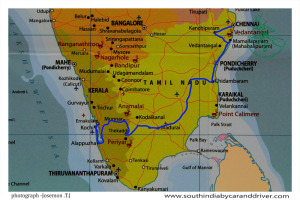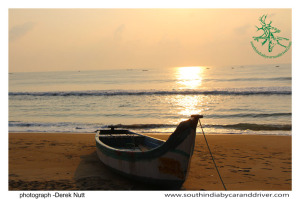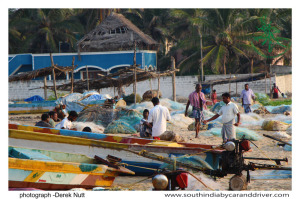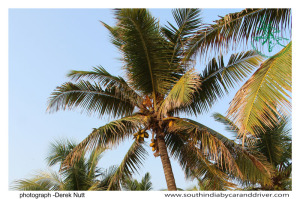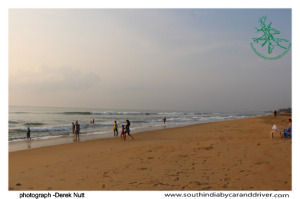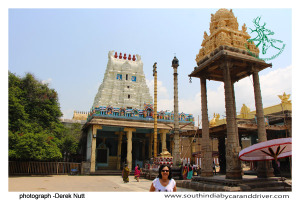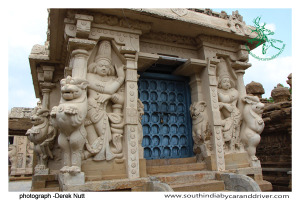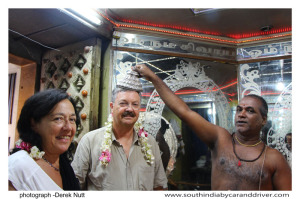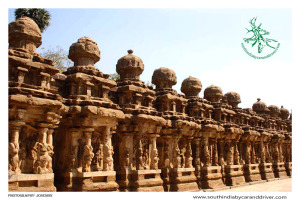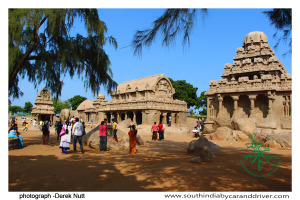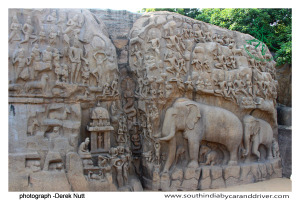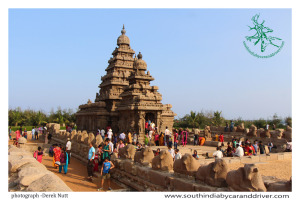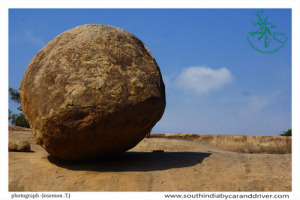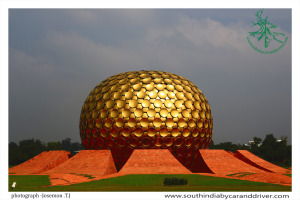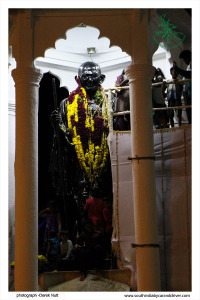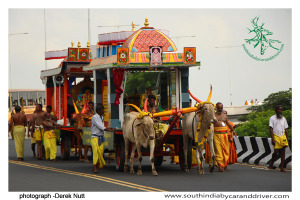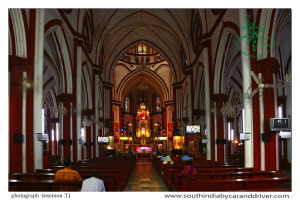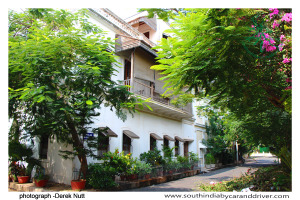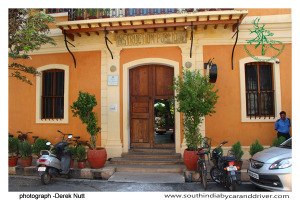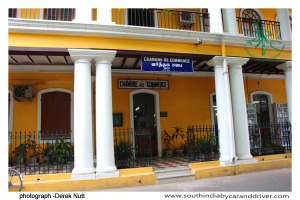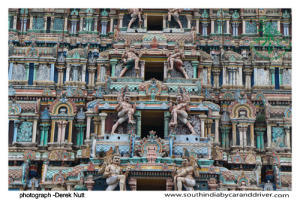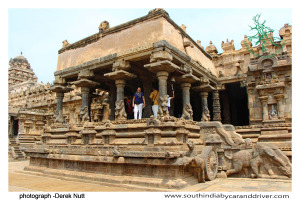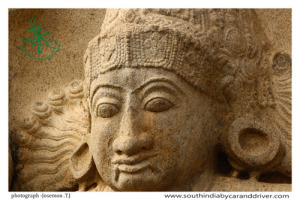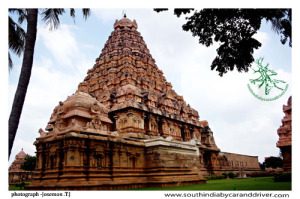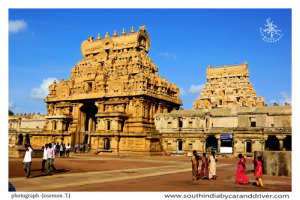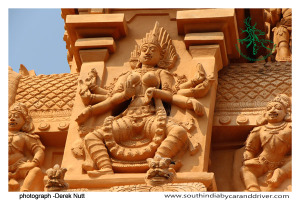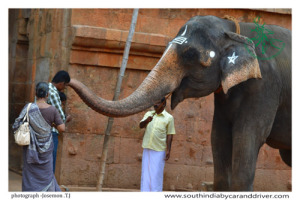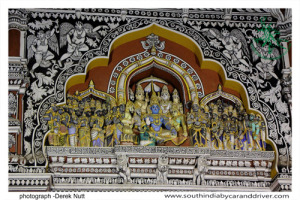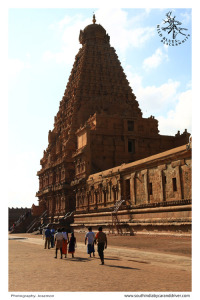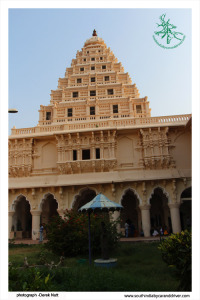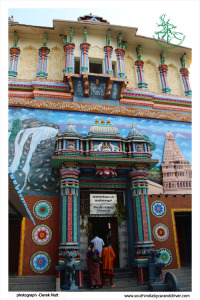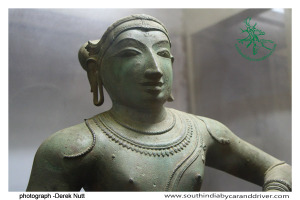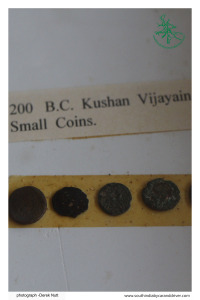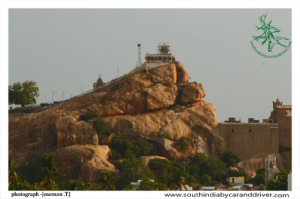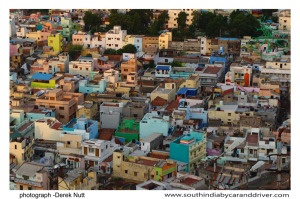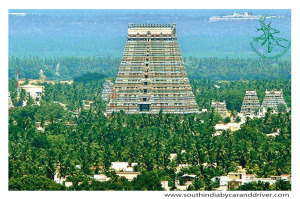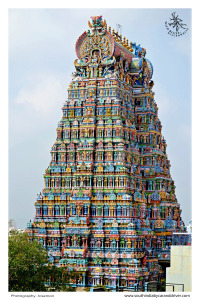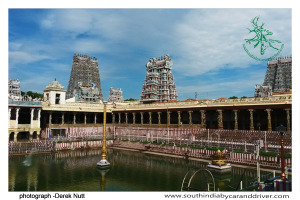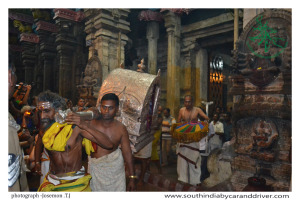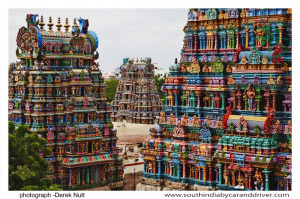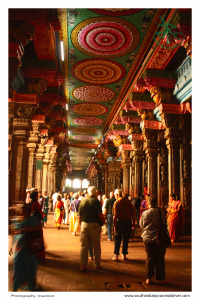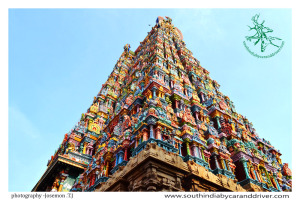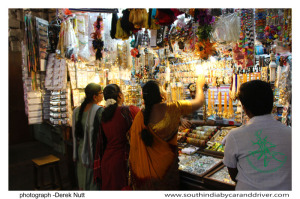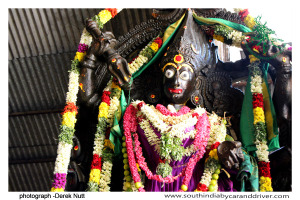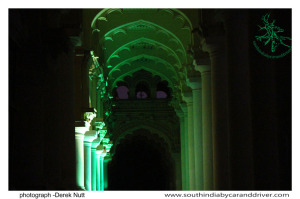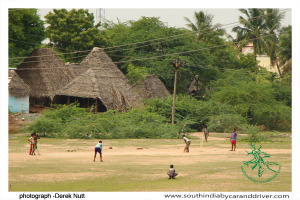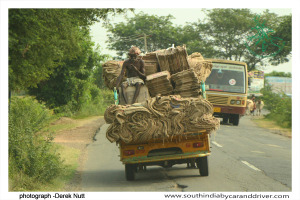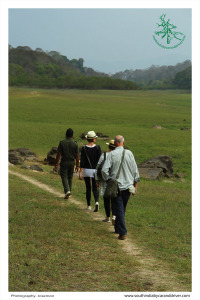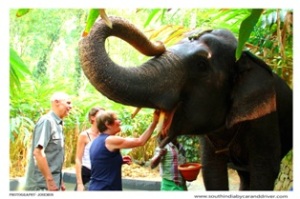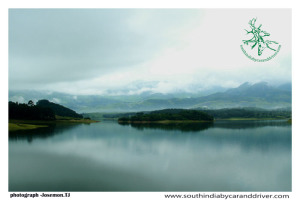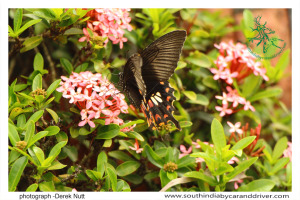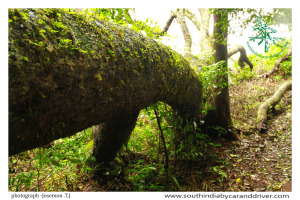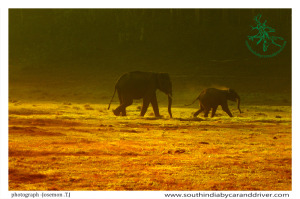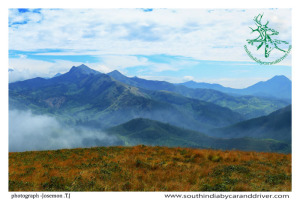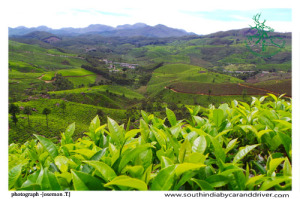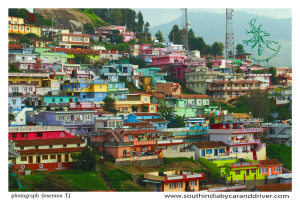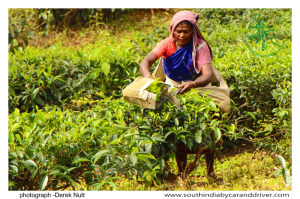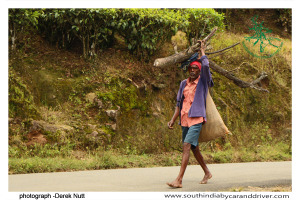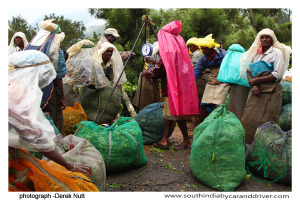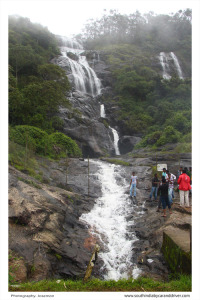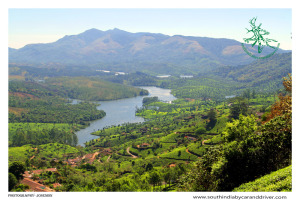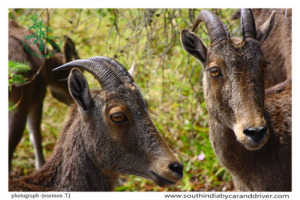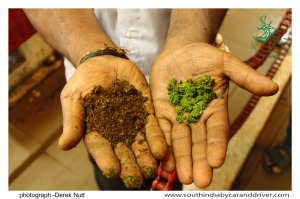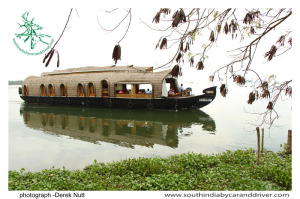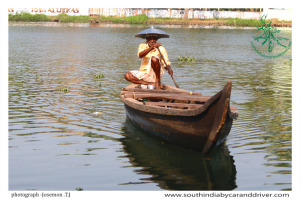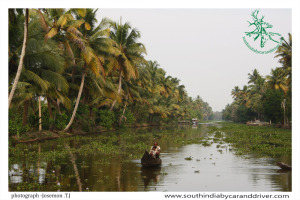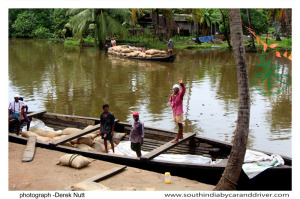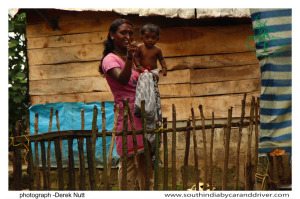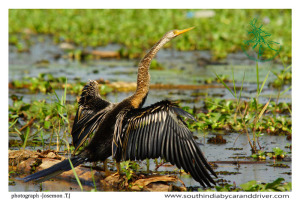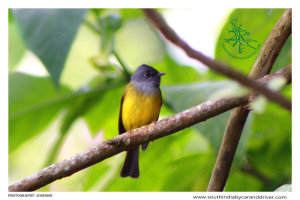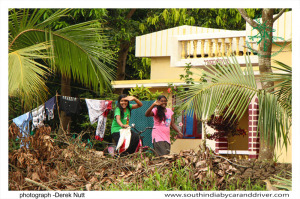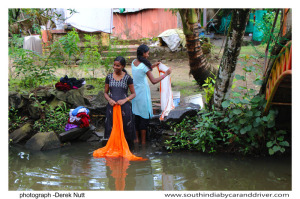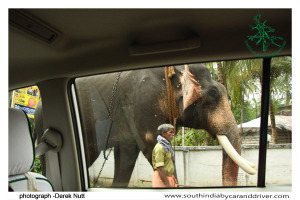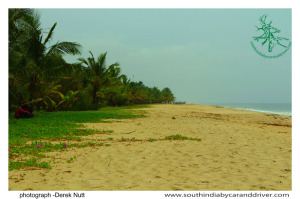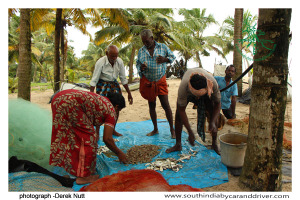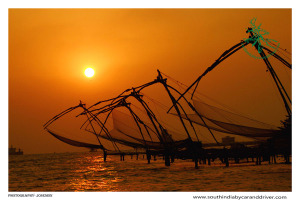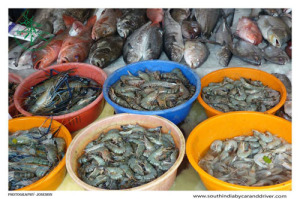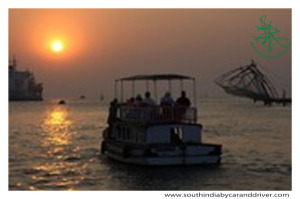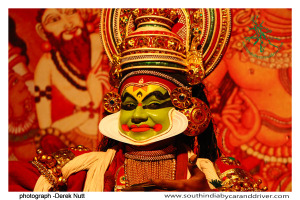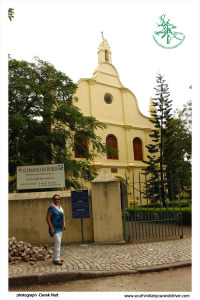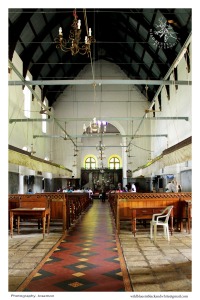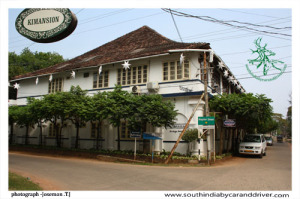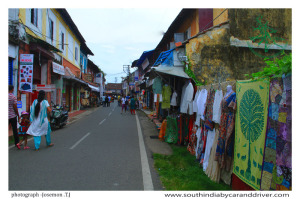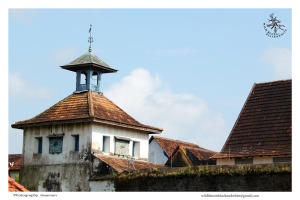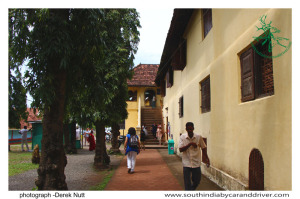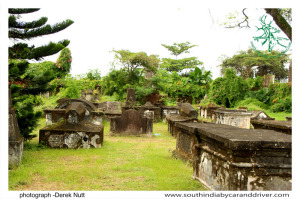16 nights, 17 days
Including
Mahalipuram, Kanchipuram, Auroville, Pondicherry, Chidambaram, Gangaikondacholapuram, Darasuram, Thanjavur, Trichy, Madurai, Thekkady, Munnar, Backwaters, Kumarkom, Marari Beach, Kochi
Airports
Arrival Chennai, Departure Cochin
Day 01 Arrival at Chennai International Airport, drive to Mahalipuram (1½ hours).
Pick up at the airport by your driver, who will take you to your hotel in Mahalipuram.
The rest of day is free at leisure.
Mahalipuram is situated on the coast of the Bay of Bengal. Its lovely beach is said to be the pick of the beaches in the east of India. Typical fishing boats and palm trees add to the colour of the sandy beach and the blue sea.
Night in Mahalipuram.
Day 02 Kanchipuram and Mahalipuram (drive of 2 hours each way).
am – Drive to and visit Kanchipuram.
Kanchipuram, the “golden city of a thousand temples”, is one of the seven most sacred cities of Hinduism in India. It is considered to be the second holiest after Varanasi. It was the capital city between 6th to 8th century AD during the reign of the notable Dravidian dynasties like Pallavas, Cholas and the Vijayanagar. Only around 70 temples of the original 1000 temples are still intact. The most famous of them is the Kailasanatha temple built with sandstone in the early 7th century A.D.
The town of Kanchipuram is famous for its silk weaving and a visit to the nearby villages to see the craftsmen at work on their looms is a rewarding experience.
pm – Return to and visit Mahalipuram.
The group of monuments at Mahalipuram is a UNESCO World Heritage Site. It occupies a stunning position on a rocky outcrop between the beach and a lagoon. Built by the Pallava rulers in the 7th century, the complex includes 14 cave temples, 9 monolithic “Rathas”, 3 stone temples and 2 relief-sculptured rock panels.
The two rock panels give graphic descriptions of Arjun’s Penance when he prayed for the powers of Shiva and forms the largest bass relief in the world.
The Shore Temple is of particular interest. It is built on the water’s edge with an unusual east-facing altar designed to catch the rising sun.
Night in Mahalipuram.
Day 03 Drive to Pondicherry (2 hours) and enroute visit Auroville.
Auroville is a universal township in the making for a population of up to 50,000 people from around the world devoted to an experiment in human unity. The concept of Auroville came to “The Mother”, Mirra Alfassa, in the 1930s. In the mid-1960s, she gave her blessing to the Sri Aurobindo Society of Pondicherry proposal to start up such a township. The concept was supported by the Government of India and in 1966, UNESCO passed a unanimous resolution commending Auroville as a project of importance to the future of humanity.
Today, Auroville is recognised as the first and the only internationally endorsed ongoing experiment of human unity-in-diversity and of the transformation of consciousness. It is concerned with and practically researches into sustainable living and the future cultural, environmental, social and spiritual needs of mankind.
Night in Pondicherry.
Day 04 Full day in Pondicherry.
The former capital of French territories in India, Pondicherry was established in 1674 by François Martin, the first director of the French East India Company. The town is laid out in a grid pattern, with parallel streets cutting across each other at right angles. The French Quarter has elegant colonial mansions, tree-lined boulevards, parks, bars and cafes. Its main promenade, the 3 km long Goubert Salai running along the Bay of Bangal, provides a refreshing walk in the day or the early evening. The French Quarter is bordered by a canal, now dry, that separated it from the Tamil part of the town, where the local populace once lived. The Manakula Vinayagar Temple is a popular pilgrimage and tourist destination. The Ashram de Sri Aurobindo has links with the Auroville township.
Night in Pondicherry.
Day 05 Pondicherry to Thanjavur (3-4 hours).
Enroute, visit Chidambaram, Gangaikondacholapuram and Darasuram.
Chidambaram Temple is a Hindu temple located in the heart of the temple town of Chidambaram. Its impressive gopurams, themselves Dravidian architecture, give access to the sanctuary of the Nataraja, the “Cosmic Dancer”, one of the most famous representations of Lord Shiva doing his blessed dance (the “nadanta”).
Gangaikondacholapuram means “The town of the chola who brought Ganga (water from Ganga) or who defeated (the kings near) Ganga”. The city was erected in the 11th century as the capital of the powerful Chola Dynasty, but it is now a modest village. The temple is a UNESCO World Heritage monument known for its architectural work of genius and the abundance of its sculptures.
The Airavateshvara Temple at Darasuram is dedicated to Shiva, who is known here as, the “Lord of Airavata”. Legend claims that Airavata, the white elephant of Indra, the god of the heavens, regained his lost colour, after worshipping Shiva at this spot. The temple is a UNESCO World Heritage monument.
Night in Thanjavur.
Day 06 Full day in Thanjavur.
This day in Thanjavur will include visits of Brihadeshwara Temple, Maratha Palace, .. .
Thanjavur was the ancient capital of the Chola kings whose origins go back to the beginning of the Christian era and who built their empire from AD850 to 1270. At the height of their power, they controlled most of the Indian peninsula, including parts of Sri Lanka and, briefly, the Srivijaya Kingdom of the Malay peninsula and Sumatra.
Probably the greatest Chola emperors were Raja Raja (985-1014), who was responsible for building the Brihadeshwara Temple, and his son Rajendra I (1014-1044), whose navy competed with the Arabs for the Indian Ocean trade routes. The Cholas also constructed the temples at Thiruvaiyaru, Gangakondacholapuram and Darasuram and contributed to the enormous temple complex at Srirangam in Thiruchirappalli (Trichy).
The Brihadeshwara Temple is a UNESCO World Heritage monument and is one of the largest temples in India and one of its most prized architectural sites. You might be witness to an elephant blessing ceremony.
Maratha Palace is a massive structure built by the Nayaks and enhanced by the Marathas. Within the palace complex there is a manuscript library, an art gallery and a museum.
Night in Thanjavur.
Day 07 Drive to Madurai and enroute visit Thiruchirappalli (Trichy) (2-3 hours).
Trichy, situated on the banks of the river Cauvery, is the fourth largest city in Tamil Nadu. It was a citadel of the early Cholas which later fell to the Pallavas. Trichy is a fine blend of tradition and modernity built around the Rock Fort. Apart from the fort, there are several churches, colleges and missions dating back to the 1760s. The town and its fort were in fact built by the Nayaks of Madurai. This city has given great Tamil scholars whose contributions to the Tamil literature have been significant.
The most famous land mark of this bustling town is the Rock Fort Temple, a spectacular monument perched on a massive rocky out crop which rises abruptly from the plain to tower over the old city. It was one of the main centres around which the wars of the Carnatics were fought in the 18th century during the British-French struggle for supremacy in India. The city is a thriving commercial centre in Tamil Nadu and is famous for artificial diamonds, cigars, handloom cloth, glass bangles, wooden and clay toys.
You might choose to climb to the top of Rock Fort to see the Ucchi Pillayar Koil at the summit, a 7th century temple dedicated to Ganesh. There are other temples carved in the rock on the way up. Your driver will take you half way up from where there are only about 340 steps to go. The view is wonderful, with eagles wheeling beneath and Trichy sprawling all around. Well worth the climb.
Srirangam Temple is on an islet formed by the twin rivers Cauvery and Coleroon, just outside Trichy. The temple is enormous in size within a complex of 156 acres and has thick rampart walls, seven enclosures, magnificent towers and an exceptional hall of 1000 pillars. This is a Hindu temple dedicated to Ranganatha, a reclining form of Hindu deity, Vishnu. It is the foremost of the eight self-manifested shrines of Lord Vishnu and is considered to be the most important of the 108 main Vishnu temples.
After Trichy, drive on to Madurai.
Night in Madurai.
Day 08 Full day in Madurai.
Visit of the Meenakshi Amman Temple dedicated to the Hindu goddess Parvati, the consort of Lord Shiva, is one of the few Hindu female deities to have a major temple devoted to her. The temple is the geographic and ritual centre of the ancient city of Madurai and one of the largest temple complexes in Tamil Nadu. The enormous temple complex is divided into a number of concentric quadrangular enclosures contained by high masonry walls. It possesses impressive gopurams, shrines, a sacred temple tank and several halls including a hall of 1000 pillars. The temple was on the list of top 30 nominees for the “New Seven Wonders of the World”.
Visit the Pudu Mandapam, a 17th century temple which has been converted into an indoor market just opposite the Meenakshi.
Later visit the Tirumala Nayak Palace, a 17th century palace erected in 1636 AD by King Thirumalai Nayak. The Palace is a gracious building, a classic fusion of the Dravidian and Islamic styles and is famous for the stucco work on its domes and arches.
Also visit the Algar Hills and Tiruparankundram Rock Temple.
Night in Madurai.
Day 09 Drive to Thekkady (3½ hours).
Drive to Periyar through the Western Ghats. After checking in at your hotel, you will visit a spice plantation where you can gain knowledge related to various spices that are grown in the area. Later, you can enjoy an elephant safari through the spice plantation.
Night in Thekkady.
Day 10 Full day visit of the Thekkady area.
In the morning you will be taken for 3 hour of trekking into the forest where you will have the opportunity to see wild animals, birds, butterflies and wonderful scenery.
In the afternoon you can enjoy a 2 hour boat trip on the Periyar lake to spot wild animals.
Night in Thekkady.
Day 11 Drive to Munnar (3-4 hours).
Scenic drive through the Munnar hills and tea plantations.
Night in Munnar.
Day 12 Full day in the Munnar area.
The rolling high-altitude grasslands are unique to the mountain landscape of the Western Ghats and a striking contrast to the dense shoals or tropical forests of the valleys. The best preserved stretch of this extraordinarily beautiful landscape is the Eravikulam National Park, spread over 97 sq. km at the base of the Anaimudi Mountain. With a height of 2,695 metres this has the distinction of being the highest peak south of the Himalayas. The peak and its environs provide good hiking territory. The park, on the border of Kerala and Tamil Nadu States, was established in 1978 with the specific aim of conserving the endangered Nilgiri Tahr mountain goat. Today, the park is the home of about 3,000 tahrs, the single largest population of this slate-grey goat in the world. Extremely agile, it inhabits the rocky slopes, and can be observed at surprisingly close quarters. The park is also home of macaques, leopards and packs of dhole, the rare Indian wild dog. Lucky guests will see the famous kurunji, the blue flowers that suddenly bloom en-masse every 12 years and transform the rocky landscape into a sea of blue.
You might choose to do a panoramic tour of the area or to visit the tea factory and the local market.
Night in Munnar.
Day 13 Drive to Kumarakom (3-4 hours).
Once you reach Kumarakom, you will board a houseboat. You will be taken through the backwater canals, sight birds and nature, as well as plantations. You will enjoy the surprises of the colourful and friendly village life that you pass along the way.
For your night stay you have two options. Either you can spend the night on a houseboat or if you prefer to be land based you can stay at a backwater resor
Night at Kumarakom (houseboat or resort).
Day 14 Drive to Marari Beach (1 hour).
If you have opted for the houseboat, after breakfast it will return to the boat jetty where your driver will be waiting for you. If you have opted for a resort he will pick you up there. This is a leisure day.
After a quiet morning in the backwaters area, you will drive to the world famous Marari Beach near Mararikulam, where you can spend the rest of the day in the way you choose. You can relax at the beach or at your resort.
Night in Mararikulam.
Day 15 Drive to Kochi (1-2 hours).
When you arrive in Kochi you will be taken to the hotel situated within the historic Fort Kochi area. You can relax in the hotel or take a stroll. In the evening you might like to go on a sunset cruise. For this you will be driven to Kochi Harbour, where you can also check out the colourful activities of the harbour and the Chinese fishing nets. You might opt to take in the evening Kathakali dance show.
Night in Kochi.
Day 16 Full day visit of Kochi.
Kochi is Kerala’s most cosmopolitan city. It is also its main trading centre for spices and seafood. Built around a salt water lagoon of the Arabian Sea, Kochi is in fact a collection of narrow islands and peninsulas. While mainland Eranakulam boasts of concrete shopping malls and glitzy apartment buildings, Mattancherry and Fort Kochi have an old-world charm, with their blend of Dutch, Portuguese and English bungalows and quaint narrow streets. The scenic location of Kochi’s natural harbour, surrounded by palm groves, green fields, inland lakes and backwaters, has enchanted visitors from across the globe for centuries.
You might choose a stroll to take in the atmosphere, to shop or to visit, for example, Jew Town and its synagogue, the Dutch Palace, Saint Francis Church and the Dutch graveyard.
Night in Kochi.
Day 17 Drive and drop off at the airport (1½ hours).
The activities for this day will depend on the time available before your flight. Most of our guests choose to relax at the hotel.
You will be driven to Cochin International Airport in time for your return flight.


